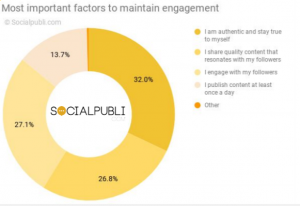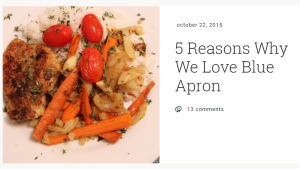Influencer marketing rocks.
Influencers can boost your visibility and engagement on social media in a big way. Gone are the days when people trusted brand endorsements over influencer recommendations. Today, an influencer’s word holds as much clout as that of family and friends, according to Twitter research.
Sadly, most small businesses are wary of including influencer marketing in their core marketing plans.
Why so?
Because they are under the impression that influencers are too pricey. Little do they know that there is a type of these expert content creators called “micro-influencers” who are affordable, accessible, and super effective.

Micro-influencers have between 1K and 10K followers. But don’t let their modest audience sizes fool you.
These tastemakers drive 22x more “buying conversations” (direct product/brand recommendations) and generate 13x more comments than high-tier influencers.
Impressive, right?
It is, but that’s not all…
These movers-and-shakers are only too happy to give free shoutouts and tags to brands they love. That doesn’t mean you can freeload off them. It’s just they are open to negotiation if the payoff is good.
As you can see, influencers aren’t as elusive as they seem. But finding the right micro-influencers for collaboration can be tricky.
If you choose a mismatched or fake influencer, your brand can lose face and it can hurt reputation. Not to mention, all the time, money, and effort that went into your influencer campaign. For a small business, that’s a sure-fire recipe for disaster.
The solution?
Be extra cautious during influencer discovery and evaluation. To help you with the task, I’ve included three actionable tips below.
Read on.
3 Tactics to Help You Identify Your Ideal Micro-Influencer
Small brands can benefit by partnering with micro-influencers since they produce concrete ROI in engagement, sales, and traffic. That’s why you need to include them when you formulate your overall marketing strategy.
To find your best-matched micro-influencers, follow the hacks below:
1. Search for Influencers Among Your Followers
Your ideal micro-influencer need not be a high-profile celebrity. A loyal customer or vocal social follower can fit the bill perfectly. In fact, it’s a smart business decision to partner with existing customers.
How so?
Four reasons:
- Since they are already fans of your brand, they will likely be more than happy to work with you. You don’t need to sell your brand to them or negotiate too hard with them.
- The collaboration will be natural and authentic, which boosts your and the influencer’s credibility.
- Follower-turned-influencers are at least 2x more relatable than celebrities. Their content is 7x more trustworthy than advertising.
- It’s a great way to find local influencers and increase your in-store traffic.
It’s quite easy to find micro-influencers among your followers. Just perform these three steps:
- Scan your followers for people with 1K-10K followers.
- Visit their profiles and check out their feeds. Shortlist the ones who post content pertinent to your niche. For instance, if you own a spa, zero in on influencers who are located nearby or who post a lot of spa-related content (product/service reviews, treatment videos, etc.)
- Evaluate their engagement rates. Do people ask them for recommendations? Do they get reshares or only likes? Do they get a lot of comments? Are they tagged by friends?
Influencers who fulfill all of these three criteria are your best match. Reach out to them with free samples or discount coupons and strike up a deal with them.
2. Use Third-Party Influencer-Discovery Tools
Sometimes, influencers inflate their follower counts to earn social status or brand deals. They buy followers or bots who don’t engage meaningfully with their content. Associating with fraudulent content creators can harm your reputation and waste your investment.
Sound alarming?
It is.
But you can resolve this issue by using third-party tools that house verified influencer databases. Tools like Klear and BuzzSumo not only connect you with genuine micro-influencers but also speed up your influencer-research process.
In minutes, you can filter tons of influencers according to follower count, relevancy, brand affinity, and even pay rates. Tool-based influencer-mapping is more precise and error-free than if done manually.
Moreover, you can go through each prospective influencer’s media kit and figure out if their content matches your quality standards.
However, onboarding influencers may not be as smooth if you use tools. You will have to devote extra time to convince random influencers to collaborate with you.
To break the ice, engage with their content and build a rapport with them. Once your target influencers are warmed up, pitch your proposal to them.
Want a pro tip?
If you plan to use influencer marketing tools, opt for their paid, premium versions. For the extra price you pay, you get access to broader databases and advanced analytics.
3. Approach Relevant Bloggers for Partnerships
Micro-influencers are obsessed with authenticity. Most influencers cite brand relevance as their top driver since it adds to their credibility. 32% of them will continue brand engagement if they are allowed to be true to themselves.
So, it makes sense to partner with famous bloggers in your industry. By doing so, you get great, relevant content and a ready-made audience. The influencer stays true to their voice. Your audience doesn’t suspect vested motives behind the collaboration.
It’s a win-win for all.
If this tactic sounds like a winner to you, take a leaf from Blue Apron’s book.
The meal-delivery service hired popular food bloggers, Anne Mauney and Naomi Davis, to write promotional blog posts for them.
Anne, a registered dietitian, wrote about why she recommends Blue Apron’s products. She wouldn’t risk her reputation and readership (and possibly, her license) to promote a less-than-awesome brand, right?
No way.
That’s why partnering with established bloggers is a smart move. Just like Blue Apron, when a qualified, successful, and knowledgeable professional from your industry vouches for your brand, you can also earn customer trust.
To identify top bloggers in your niche, conduct a Google search, or use tools like AllTop.
Dig into influencers’ websites and social media bios to find out if they are open to collaborations. If so, email your pitch to them. In your communication, highlight your shared connection. Offer to send samples for them to review.
Though this tactic is a bit time consuming, the payoff in the long-term is good.
Ready to Onboard Your Perfect Micro-Influencers?
Influencers can help grow your business. We all know that, right? Micro-influencers, in particular, generate high returns with low costs. But the wrong micro-influencers can set back your marketing goals by miles, which is something that small businesses can’t afford.
I’m confident that you will find the tips above to be practical and helpful. Let me know if you need more help finding and managing influencers. Leave your requests in the comments below. I’ll be back with the answers soon.


